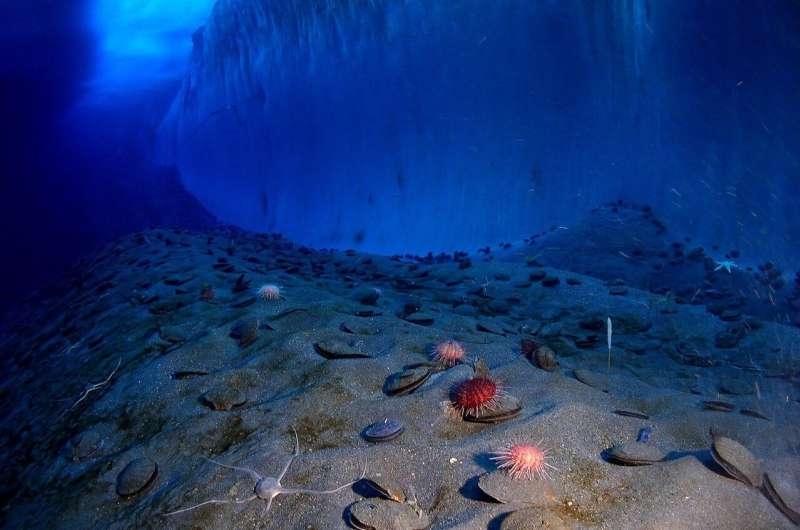Credit: CC0 Public Domain
Acoustical properties of the sea bottom can be described with a geoacoustic (GA) model comprising several layers characterized by parameters such as sound speed, density, sound absorption and thickness.
As the parameters are difficult to measure directly, they are often estimated by inversion methods. Although GA inversion is the most economical method to infer the seabed acoustical parameter values, the results are unsatisfactory owing to the ambiguities between GA parameter values obtained in this way.
Researchers from the Institute of Acoustics of the Chinese Academic of Sciences (IACAS) proposed that model-free parameters (P, Q) could describe the reflection characteristics of the sea bottom. They also demonstrated that the values of P and Q were consistent with the GA parameter values inverted from different models.
They inverted data from a previous acoustic propagation experiment for the seabed GA parameter values. The inverted results showed the consistency between the inverted GA parameter values in different bottom structure assumptions and reflection coefficients described by (P, Q) parameters.
The parameters (P, Q) provide a simple representation of the seabed characteristics, and could be used as a basis for research focused on sea bottom reflective characteristics, classification of sea bottom, and fast-field computation.
The research, published in IEEE Journal of Oceanic Engineering, was supported by the National Natural Science Foundation of China.
More information: Chaojin Zhang et al. The Same Reflective Characteristics for Different Effective Geoacoustic Parameters in Different Models, IEEE Journal of Oceanic Engineering (2020). DOI: 10.1109/JOE.2020.2984295
Provided by Chinese Academy of Sciences























